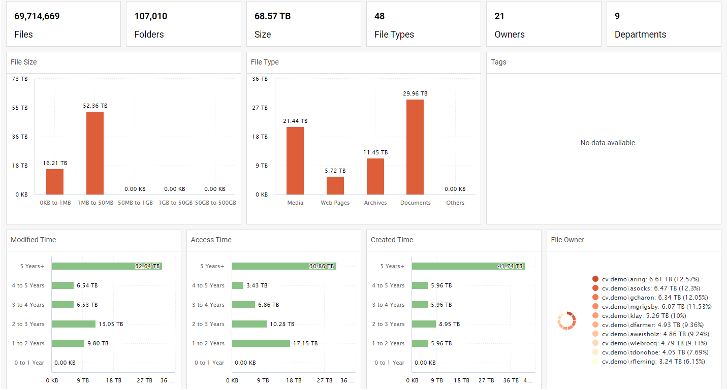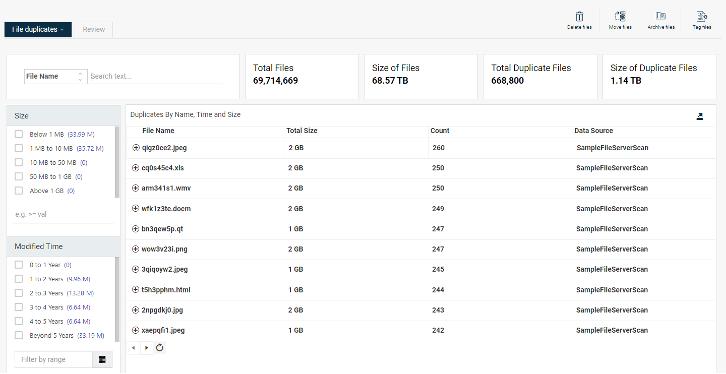When organizations perform cloud migrations to meet their digital transformation needs, there are often times when risks and costs are overlooked. It’s not unusual to see datasets of unstructured data being moved in bulk using a simple copy and paste action or a script being executed to move files. But is this really saving you time in the long term? A question you need to ask is: does the business actually need all of this data?

By blindly migrating all this unwanted ROT data, not only are you extending your migration window, but you’re also increasing your storage cost in the destination cloud, extending services levels, and adding to your organization’s information risk.
Insights into your data
Whether you’re an existing Commvault customer or looking to use Commvault in the future, Commvault goes beyond backup and recovery with Commvault® File Storage Optimization. It provides rich data insights presented in easy-to-view dashboards, directly from the same UI used for backup and recovery operations: the Commvault Command CenterTM. These insights help you to identify ROT data and drive the right actions to exclude it from migrations. By including insights such as last modified, accessed, or created time – all grouped by year, you can prioritize which files are important and which are ROT, so you can move the right data to where it needs to be, faster. This helps you save on storage costs, reduces strain on your IT staff, and allows your data owners to be more productive.

Duplicate data? Not a problem!
Commvault® File Storage Optimization also allows you to easily uncover duplicate data. This data might be present due to import, software, or human error, and is data that can pose inherent risks if retained. Given that duplicate data may contain sensitive information, figuring out which data to keep and which to remove can be a complicated decision. But with Commvault® File Storage Optimization, you can quickly obtain data insights to assist with your decision making. Finding out where this duplicate data is located, who has access to it, and excluding it prior to your migration will help ensure that the right data is moved to where it needs to be, quickly and painlessly.

It’s your data, don’t risk it

A further consideration is risk. Storing ROT data presents risk to your organization. This can lead to bad business decisions being made based on outdated data, increased attack surface for ransomware attacks, and increased risk of compliance breaches. Why migrate ROT data and compound that risk? By using Commvault® File Storage Optimization to identify and exclude ROT data prior to a migration, not only are you moving the right data, but you’re also lowering information risk by maintaining tighter control of your data. And by reviewing file ACLs, you help ensure that the data you’re moving can only be accessed by the appropriate personnel, lowering your risk even further.
Accelerate your migrations today
Commvault goes beyond backup and recovery to help accelerate migrations with Commvault® File Storage Optimization. Using the same familiar UI used for backup and recovery operations, you can easily identify and exclude ROT data prior to migrations lowering migration times, saving on storage costs, reducing strain on your IT staff, and reducing information risk. Learn how you can accelerate your migrations today and move the right data to where it needs to be faster.
For more information, please visit www.commvault.com/file-storage-optimization


